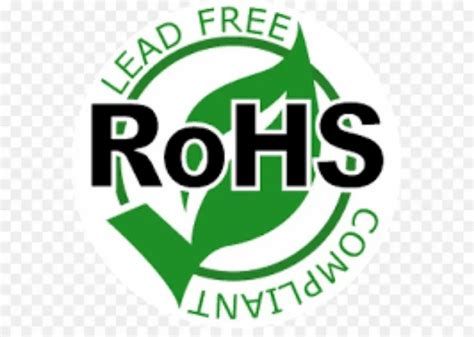What is RoHS Compliance?
RoHS stands for “Restriction of Hazardous Substances”. It is a directive that originated in the European Union and restricts the use of specific hazardous materials found in electrical and electronic products. The directive is now in effect in many countries around the world.
The restricted substances under RoHS are:
| Substance | Maximum Concentration Value |
|---|---|
| Lead (Pb) | 0.1% |
| Mercury (Hg) | 0.1% |
| Cadmium (Cd) | 0.01% |
| Hexavalent Chromium (Cr6+) | 0.1% |
| Polybrominated Biphenyls (PBB) | 0.1% |
| Polybrominated Diphenyl Ethers (PBDE) | 0.1% |
| Bis(2-Ethylhexyl) phthalate (DEHP) | 0.1% |
| Benzyl butyl phthalate (BBP) | 0.1% |
| Dibutyl phthalate (DBP) | 0.1% |
| Diisobutyl phthalate (DIBP) | 0.1% |
Any electrics product that contains these substances in concentrations exceeding the maximum values is not RoHS compliant. Non-compliant products are restricted from being sold in countries enforcing RoHS.
Why is RoHS Compliance Important?
RoHS compliance is important for several reasons:
-
Market Access – RoHS is enforced in many major markets, including the EU, China, Japan, and India. Non-compliant products are barred from these markets.
-
Environmental Protection – The restricted substances are hazardous to the environment. RoHS helps reduce electronic waste and its negative environmental impact.
-
Consumer Safety – The restricted substances are also harmful to human health. RoHS helps ensure safer products for consumers.
-
Corporate Responsibility – Demonstrating RoHS compliance shows a commitment to environmental and social responsibility, which is increasingly important to consumers and investors.
Steps to Make RoHS Compliant Electrics Products
Making RoHS compliant electrics products requires a systematic approach. Here are the key steps:
1. Understand the Requirements
The first step is to fully understand the RoHS requirements. This includes:
- Knowing the current list of restricted substances and their maximum concentration values
- Understanding which products are in scope of RoHS
- Being aware of any exemptions that may apply to your products
2. Review Your Product Design
Next, review your product design with RoHS in mind. This involves:
- Identifying any restricted substances in your current design
- Considering alternative materials and components that are RoHS compliant
- Redesigning products as necessary to eliminate restricted substances
3. Verify Your Supply Chain
RoHS compliance extends to your entire supply chain. You need to:
- Communicate RoHS requirements to all suppliers
- Obtain declarations of RoHS compliance from suppliers
- Conduct due diligence to verify supplier claims
- Replace non-compliant suppliers if necessary
4. Implement Control Measures
Implementing control measures helps ensure ongoing RoHS compliance. This can include:
- Incoming inspection of materials and components
- Testing and measurement of products
- Segregation and labeling of RoHS compliant and non-compliant materials
- Training of personnel on RoHS requirements and procedures
5. Maintain Documentation
Proper documentation is essential for demonstrating RoHS compliance. You should maintain:
- Material declarations from suppliers
- Test reports
- Product specifications showing RoHS compliance
- Procedures for RoHS compliance
6. Obtain Certification
While not mandatory, obtaining RoHS certification from a third-party can provide additional assurance to customers. Steps typically include:
- Applying to a certified RoHS testing laboratory
- Submitting products and documentation for review
- Undergoing an audit of your RoHS management system
- Receiving a RoHS compliance certificate if all requirements are met
Common Challenges in RoHS Compliance
Achieving and maintaining RoHS compliance can present challenges. Some common issues include:
1. Complex Supply Chains
Many electrics products have complex supply chains, making it difficult to verify compliance of every component.
2. Evolving Requirements
RoHS requirements can change over time, with new substances being added to the restricted list. Staying current can be challenging.
3. Conflicting Regulations
Different countries can have different RoHS requirements, creating complexity for products sold in multiple markets.
4. Cost Impact
Transitioning to RoHS compliant materials and processes can involve significant costs.
Despite these challenges, RoHS compliance is a necessity for electrics manufacturers in today’s market. With proper planning and execution, the benefits of compliance far outweigh the costs.

FAQ
1. What happens if my products are not RoHS compliant?
Non-RoHS compliant products are prohibited from being sold in countries enforcing RoHS. Selling non-compliant products can result in fines, product recalls, and damage to your brand reputation.
2. Are all electrics products subject to RoHS?
Most electrical and electronic products are in scope of RoHS. However, there are some exemptions, such as military and space equipment, large-scale stationary industrial tools, and some medical devices. It’s important to check the specific regulations for your product and market.
3. How can I tell if a component is RoHS compliant?
Suppliers should provide a Declaration of Conformity (DoC) stating RoHS compliance. You can also send components for third-party testing. Look for components labeled as “RoHS Compliant” or with the RoHS symbol.
4. Do I need to test every product for RoHS compliance?
It’s not necessarily required to test every single product. A risk-based approach, focusing on high-risk components and materials, can be sufficient. However, some customers may require testing of every batch.
5. How often do I need to renew RoHS certification?
RoHS certification typically needs to be renewed every 1-2 years, depending on the specific certification scheme. This involves a surveillance audit to ensure ongoing compliance with RoHS requirements and effective implementation of your RoHS management system.
Conclusion
RoHS compliance is a critical requirement for electrics manufacturers in today’s global market. By understanding the requirements, reviewing product design, verifying the supply chain, implementing control measures, maintaining documentation, and obtaining certification, manufacturers can ensure their products meet RoHS standards. While challenges exist, the benefits of RoHS compliance – including market access, environmental protection, consumer safety, and corporate responsibility – make it a necessary investment for long-term success.

No responses yet